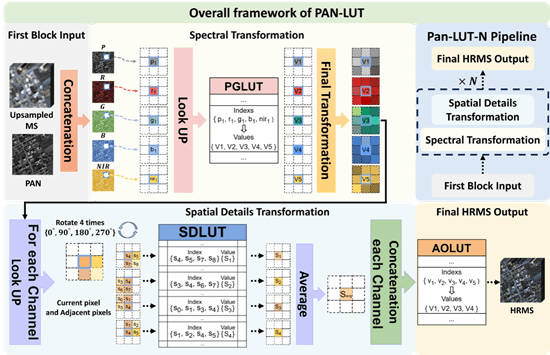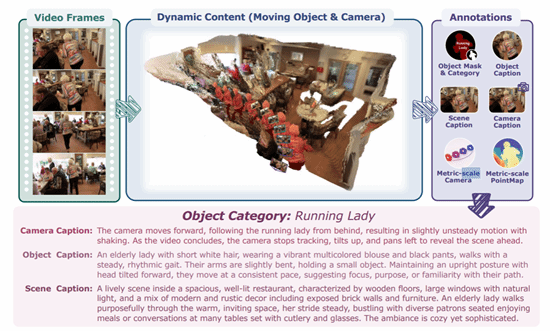
The Thirty-Ninth Annual Conference on Neural Information Processing Systems (NeurIPS 2025), a premier international conference in artificial intelligence and machine learning, will be held from Nov 30 to Dec 5 in Mexico City and from Dec 2 to 7 in San Diego, the United States.
This year, the main track received 21,575 valid submissions, with 5,290 accepted, yielding an acceptance rate of 24.52%.
The Key Laboratory of Multimedia Trusted Perception and Efficient Computing at Xiamen University (XMU) had 18 papers accepted.

Pan-LUT efficiently processes 8K high-resolution remote sensing images in under 1 millisecond. [Photo/en.xmu.edu.cn]
Among the accepted papers, "Pan-LUT: Efficient Pan-sharpening via Learnable Look-Up Tables" introduces a novel framework that balances computational efficiency and performance for high-resolution remote sensing images.
The method employs a PAN-guided look-up table for channel-wise spectral mapping and additional tables to capture fine-grained spatial details and adaptive local contexts. Containing fewer than 300K parameters, Pan-LUT processes an 8K resolution image in under one millisecond on a single NVIDIA GeForce RTX 2080 Ti GPU.
Experiments show that it outperforms state-of-the-art methods in real-world full-resolution scenarios, demonstrating both efficiency and effectiveness.

Shapley-MoE efficiently prunes key experts in large Mixture-of-Experts models while maintaining performance. [Photo/en.xmu.edu.cn]
In the area of model structure and efficiency optimization, "Discovering Important Experts for Mixture-of-Experts Models Pruning Through a Theoretical Perspective" presents Shapley-MoE, a pruning method inspired by cooperative game theory.
It quantifies each expert's contribution via Shapley value, avoiding exhaustive evaluations. Monte Carlo sampling is used to approximate Shapley values efficiently, and two additional strategies – Early Truncation and Router-Guided Importance Sampling – further improve sampling accuracy and efficiency.
Empirical results show that Shapley-MoE outperforms existing pruning methods while maintaining high performance on large models.
Additionally, other accepted papers cover cutting-edge topics such as model compression, image understanding, and spatiotemporal perception.

Illustration from "DynamicVerse: Physically-Aware Multimodal Modeling for Dynamic 4D Worlds". [Photo/en.xmu.edu.cn]